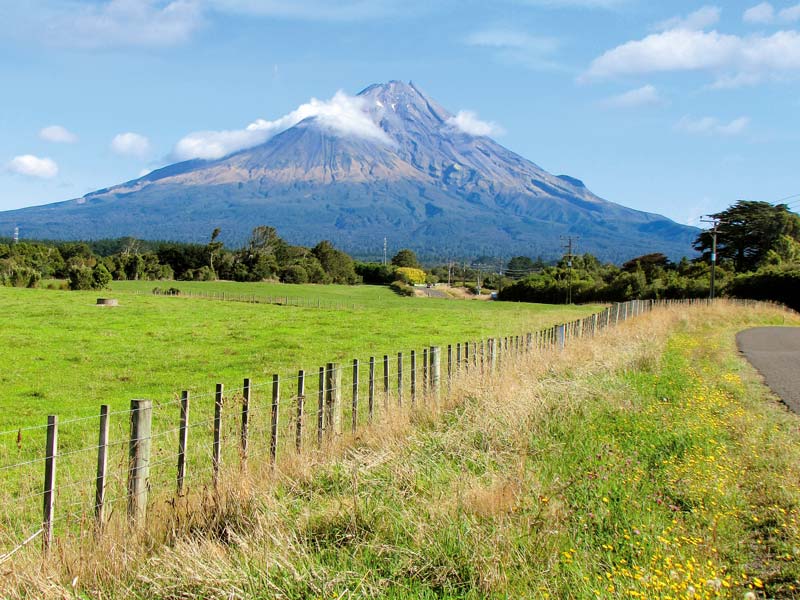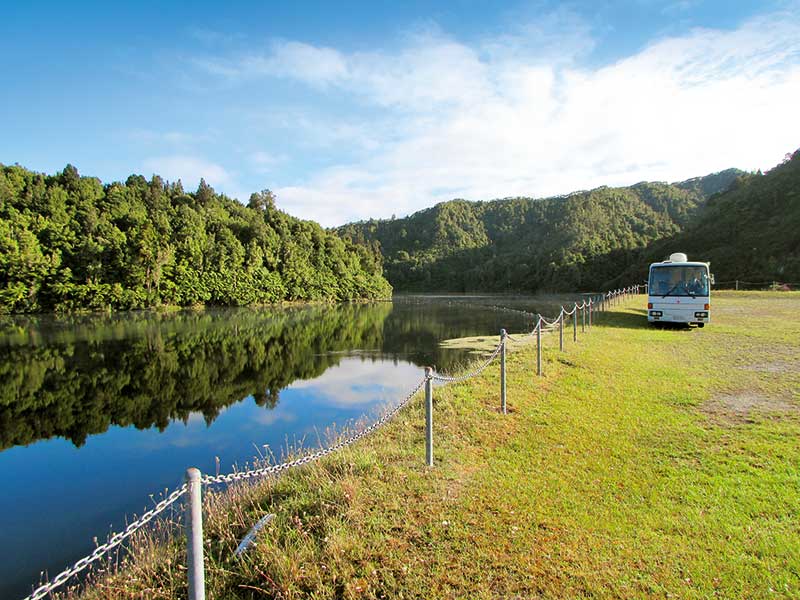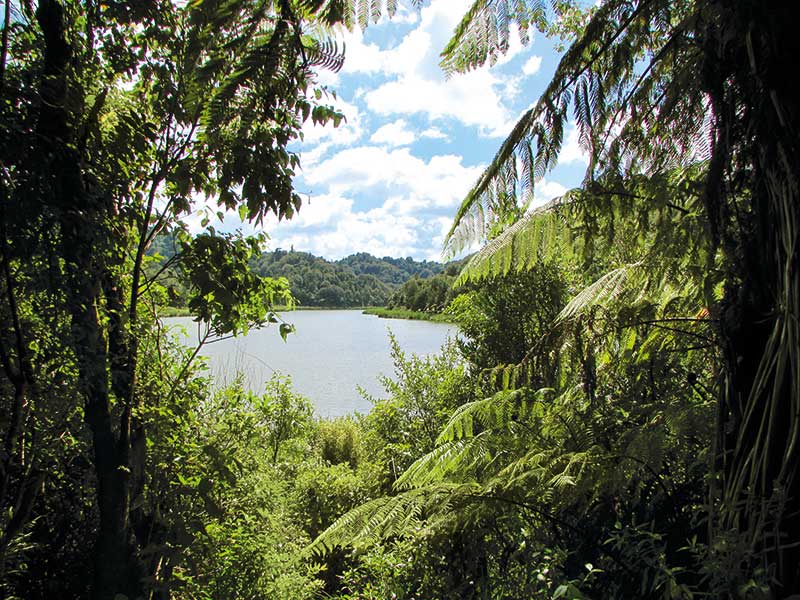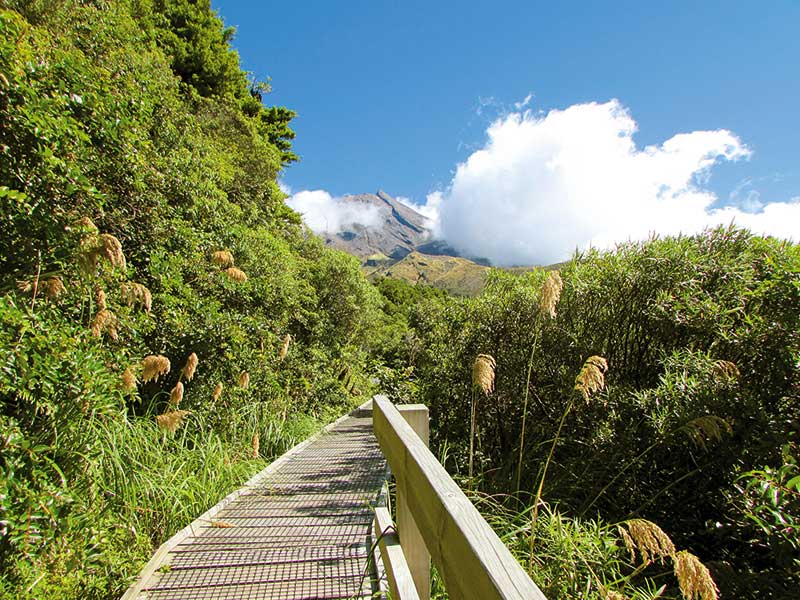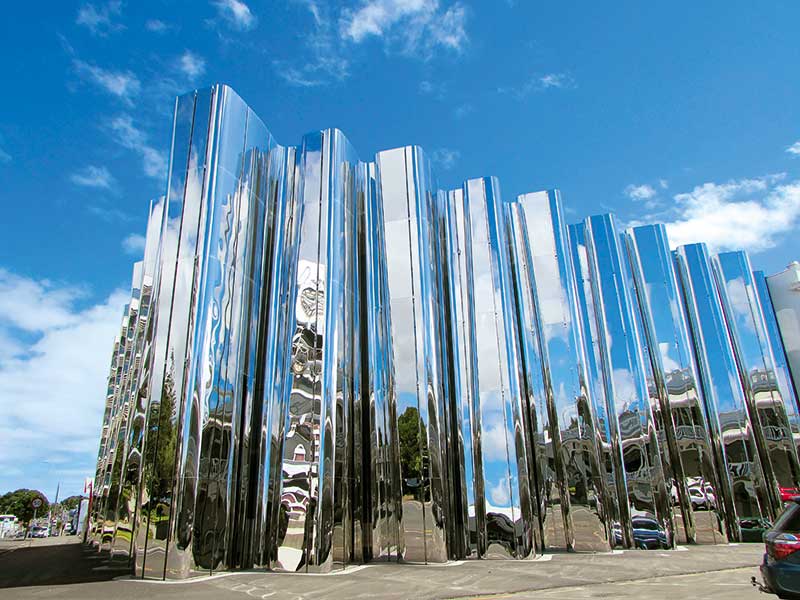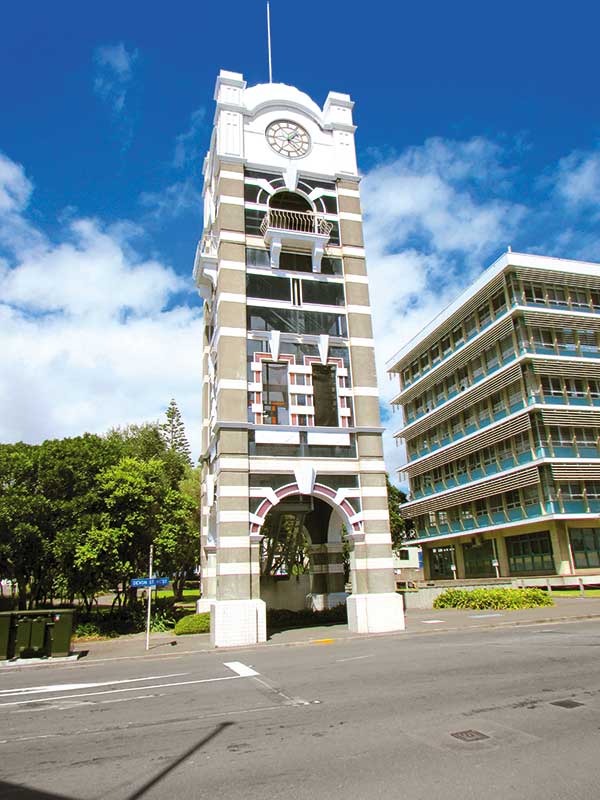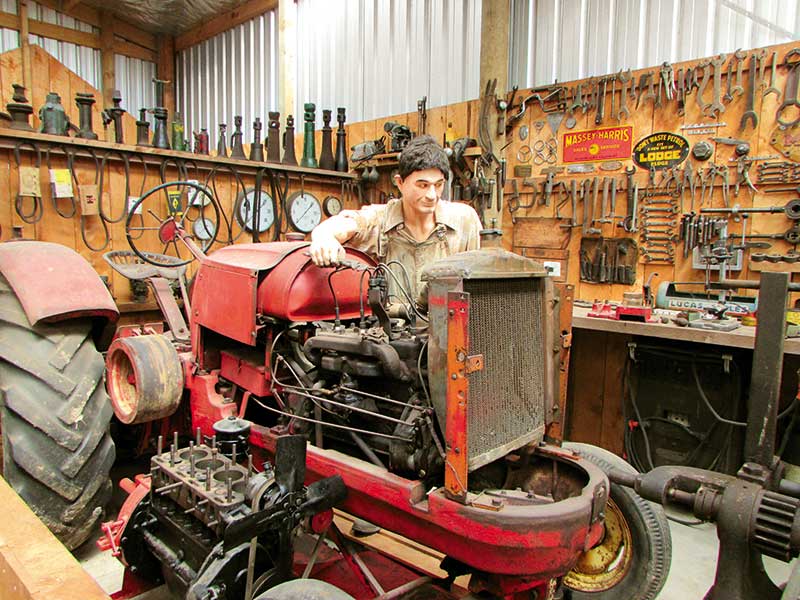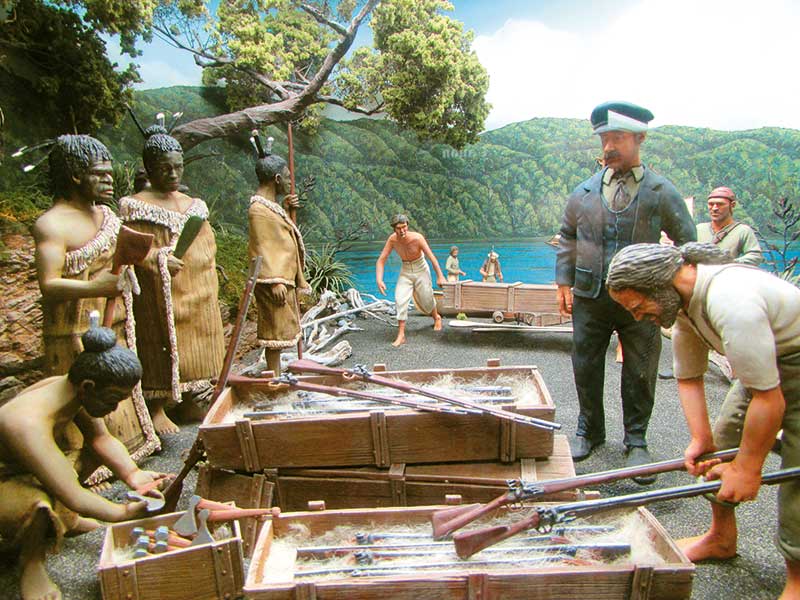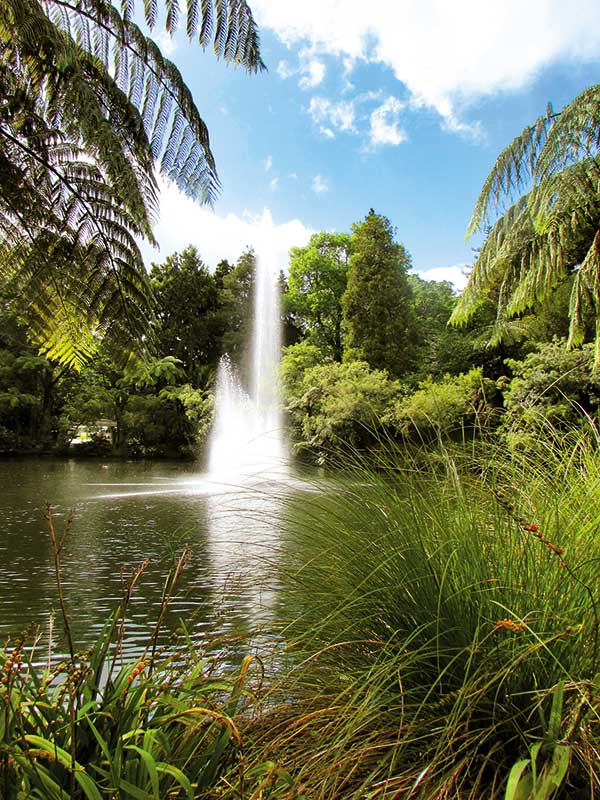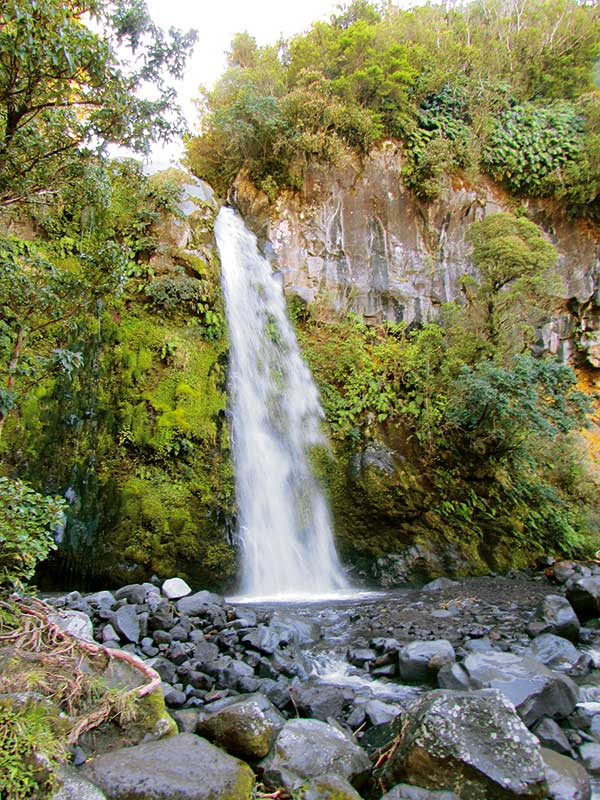Taranaki has it all: lakes, beaches and, of course, the mountain. Sometimes shrouded with cloud, other times standing crisp and clear against blue skies, Mt Taranaki (Mt Egmont) is an abiding presence.
We started our tour behind the mountain at Lake Rotorangi. This 46-kilometre-long serpentine lake is the longest man-made lake in the country, formed in 1984 when the Patea River was dammed. The flooded valley is fed by springs and has become a protected area of natural beauty. The hard part is getting there – the road through the mountains twists down around hairpin bends, over a narrow bridge, then along 11 kilometres of rough, unsealed track.
Repeating the tortuous drive, uphill this time, we headed on to Hawera where we based ourselves for some South Taranaki exploring. Te Hawera means ‘the burnt place’ and has indeed suffered from fire. First there was the fire that destroyed the original village then three major fires – in 1884, 1888 and 1912. After this last fire, work was started on what is now the town’s icon, its water tower. Not in use now, the renovated tower can be climbed for great views.
Just outside Hawera at Tawhiti is what has been described as New Zealand’s most innovative museum. Ex art teacher Nigel Ogle has created a series of realistic displays with life-sized figures created from moulds of real people. The smaller scale dioramas are also extremely realistic – no two models are the same. Since our previous visit the museum has been enlarged and this time we took in the Traders and Whalers attraction.
About 20 kilometres north of Hawera is the town of Eltham. New Zealand’s first butter export was from Eltham, today it makes gourmet cheese. The town’s buildings are a mix of Victorian and Edwardian and it is worth a stroll around.
Inland from Eltham is Lake Rotokare, ‘the rippling lake’. In 2008 the Rotokare Scenic Reserve Trust constructed a predator-proof fence around the reserve which has encouraged the proliferation of native birds. There is a four-kilometre walk around the lake through bush and along boardwalks in the swamp forest section.
We took the road from Eltham to Dawson Falls Visitors Centre in Egmont National Park. The park’s bush clad slopes are entered suddenly from the rolling pastoral countryside and the road rises gradually to 900 metres above sea level. From the Visitors Centre there are several walks and we did two of the shorter ones, the Kapuni Loop Track, which passes the Dawson Falls, and the Wilkies Pools Track. Both these loop walks are graded easy/moderate and take around an hour, passing through what the locals call ‘goblin forest’ because of the moss-covered gnarled trees.
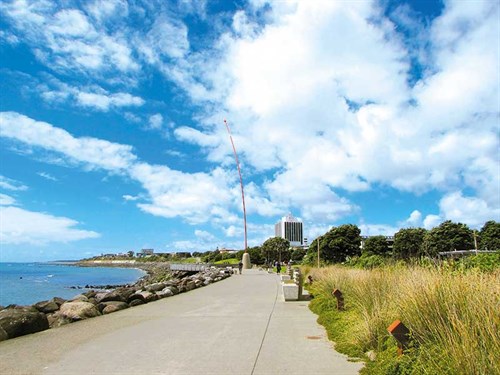
Originally called Stratford-upon-Patea, Stratford’s street names are taken from Shakespeare’s plays. Stratford is 11 kilometres north of Eltham and is the gateway to East Egmont on the slopes of Mt Taranaki and, to the east, the Forgotten World Highway (SH43) which wends inland to Taumarunui. Stratford’s Broadway is home to New Zealand’s largest glockenspiel from which, four times daily, Romeo and Juliet emerge.
We spent several days in New Plymouth, a sophisticated seaside city with plenty to see and do. We were keen to visit the Govett-Brewster Art Gallery’s new Len Lye exhibition, housed behind a rippling wall of mirror-like stainless steel. We weren’t disappointed, the kinetic works were fascinating. Lye’s 45-metre-high Wind Wand can be seen at Puke Ariki Landing on the Coastal Walkway.
No visitor to New Plymouth should miss Pukekura Park. Opened in 1876, the park covers 52 hectares of lakes, formal gardens, specimen trees, trails in native bush and a zoo. We spent several hours walking around and even then missed some parts! The fernery and display houses had us wishing we had the skill to reproduce some of the gardens at home.
After morning tea at the Edwardian-looking Tea House on the Lake, we found the oldest Puriri Tree in the country (2000 years old) beside the band rotunda but missed The Gables, the oldest hospital still standing in New Zealand. It was built in 1848 and moved to its present site in 1904.
Reluctantly we left New Plymouth’s attractions and drove into North Taranaki along the Surf Highway. We freedom camped at the reserve at Tongaporutu and walked along the beach to explore part of the White Cliffs Walkway. The section we walked was beautiful and dramatic, starring coastal stacks known as the Three Sisters although there are now only two of them. Years ago, apparently, there were four but the sea has gradually claimed the first two.
Heading north from Tongaporutu we drove away from Taranaki – both region and mountain. Our exploration behind the mountain had taken us to lakes, waterfalls, gardens, country towns and a bustling city. We had sampled some of Taranaki’s museums and galleries. We had cycled and walked along coasts and through bush. Taranaki lived up to its hype – it is a region ‘like no other’.

